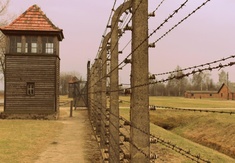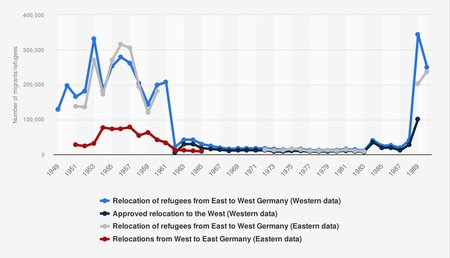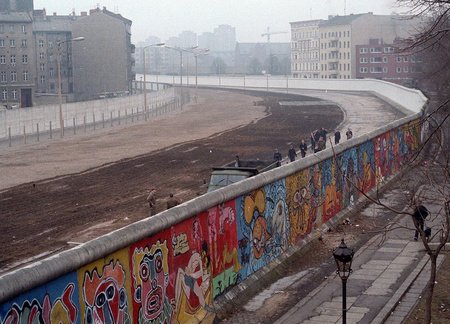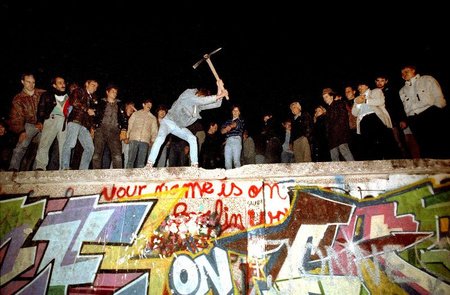
The East Germany Factfile: Chapter I
First published: Saturday April 29th, 2023
Report this blog
In the beginning...
there was the Third Reich (famously known as Nazi Germany). In 1945, the Germans surrendered to the Allied Forces. Following the end of the Second World War, Germany was divided into four zones that were occupied by four nations; the United Kingdom, France, the USA and the Soviet Union. The Cold War began soon after. Afterwards, West Germany and East Germany became established in 1949.
The Soviet Union was notorious for not rebuilding their part of Germany but rather utilizing its resources for war reparations, unlike the west with the USA's Marshall Plan. But how was normal life in East Germany really like?
This blog series primarily focuses on East Berlin but can be applied to an extent throughout the rest of the former country.
The Origins
The Berlin Wall was the large, concrete wall that separated the western part of Berlin and eastern part. The wall's construction commenced on the 13th of August 1961 and began as a recommendation by Soviet leader Nikita Khrushchev to close the border between West Berlin and East Berlin. However, the wall's origins do not begin there, but instead it began after the end of the Second World War. The Allied Powers split up German territory and occupied it. Soon after, the western parts began being improved as part of the Marshall Plan, which was an initiative by the USA to help Europe recover economically. On the other hand, the Soviet Union constantly extracted resources and put down rebellions and protests against people who did not support them. This made life difficult and apocalyptic in East Berlin and citizens began escaping it by simply crossing the border into West Berlin. Between 1945 and 1961, about 3 million people had left. By August 1961, about 2000 East Germans were leaving their country every day!

Construction and Extermination
This threatened to collapse the nation’s economy. So, the government began closing off access into the West. Initially, the border was composed out of a meshed fence with barbed wire, but over time the amount of security features increased. On the 15th of August, concrete began replacing barbed wire. The government claimed that the wall protected their citizens from the influence of capitalism. During the rest of 1961, the grey barrier rapidly increased in size, eventually consisting of a series of concrete walls that were up to 5 meters high. They were topped with barbed wire and guarded with hundreds of watchtowers built along the wall. They were also guarded with landmines, gun emplacements and famously the Death Strip, which was a wide, flat area). By the 1980s, the system of walls, electrified fences and other fortifications was 45 kms long (the section that separated West & East Berlin) and extended another 120 kms around West Berlin.

The Wall's Conclusion
In March 1985, Mikhail Gorbachev, who would be the final leader of the Soviet Union, came to power. He started a famous reform called Glasnost, which gave more freedom to the people and allowed people to express their opinion more freely. The Hungarian regime had collapsed and were dismantling their section of the Iron Curtain (a political, military and ideological boundary that divided the communist side of Europe and the liberal and capitalist side of Europe). East Germans that wanted to escape their country, decided to travel to East Berlin. In October 1989, East Germany’s hardline, communist regime was forced out of power during the wave of democratization that spread through eastern Europe. Eric Honecker, who was the leader of East Germany, was forced to resign on the 18th of October 1981 and people continued to escape to the west through Hungary. On the 9th of November 1989, the East German government announced that they would be making travel permits easier to obtain, but people began crowding at border crossing points to such a high extent that the border guards were forced to just open the gates. People from both sides rejoiced the occasion and the deconstruction of the Berlin Wall began. Today, most of the wall has been removed but, in some places, there are remainders of it that still stand today.

The story shall continue...
To summarize, the Berlin Wall kept East Germans from leaving to the west for 30+ years and then was destroyed. We also should give our respects to the fallen legend, Mikhail Gorbachev. But until the next blog arrives next month, bis dahin verabscheide ich mich!
--------------------------------------------------------------------------------------------------------------------------------------Sources
1) Berlin Wall built (history.com)
2) Berlin Wall | Definition, Length, & Facts | Britannica
3) The rise and fall of the Berlin Wall - Konrad H. Jarausch | TED-Ed
4) Glasnost | Soviet government policy | Britannica
5) The Cold War - OverSimplified (Part 1) - YouTube
Image credit:
1) "Relocation between East and West Germany 1949-1990 | Statista." https://www.statista.com/statistics/1054017/relocation-between-east-and-west-germany-1949-1990/
2) Wikimedia Commons; Noir
Random Related Video: (1) "Ich bin ein Berliner" - YouTube

But great blog, anyways. Love that you referenced your sources.